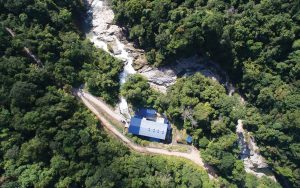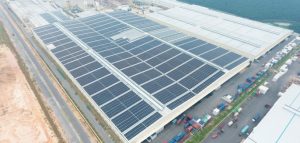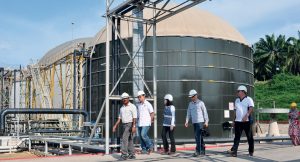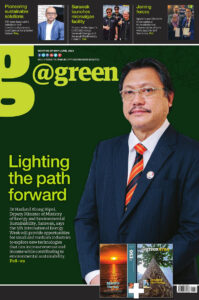Power sector being heralded as one area to accelerate the economy post-pandemic
WHILE THE country was caught up in the Covid-19 pandemic, few would have noticed the advancements made in national Renewable Energy (RE). Malaysia has now upped its RE targets from 20 per cent of the capacity mix by 2025 to 31 per cent.
The new target for 2035 is now 40 per cent.
The previous target was with the development of RE resources from biomass, biogas and hydro in mind. At that time, solar resources were given a lower mark. However, the scene has changed rapidly over recent years.
Ibrahim Ariffin, Director (Energy Analyst) at SEDA Malaysia’s Strategic Planning Division, attributed this to the acceleration of solar projects deployment over the past few years.

With the support from Feed-in-Tariff (FiT), Nett Energy Metering (NEM) and Large Scale Solar (LSS), solar projects have become more financially viable towards materialising higher solar capacity in the capacity mix.
“Assessing other countries’ experiences with higher solar penetration, Single Buyer (the sole power purchasing agency for Malaysia Electric Supply Industry (MESI)) has initiated a study to assess the grid system readiness,” said Ibrahim.
“This is towards accepting more capacity from variable renewables (i.e., solar resources for Malaysia’s current portfolio) while ensuring system security and the highest reliability of the electricity supply and impact on affordability.
“The study concluded at the end of 2018. It showed that Peninsular Malaysia, in particular, can take as high as 24 per cent penetration limit without imposing significant risk to the grid system.
“It provides insight to the Ministry of Energy and Natural Resources, regulators as well as utility companies in offering support to ramp up the solar capacity target in the capacity mix.”
The deployment of solar in Peninsular Malaysia will increase from the current 1GW capacity to 4.4GW by 2025 and 6.6GW by 2035. This more than six-fold increment will see a sizeable injection into Malaysia’s future investment from RE.
Apart from addressing the climate-change impact, the power sector is being heralded as one area to accelerate the economy post-pandemic.
The boosted national RE target also supports ASEAN’s aspiration in realising 35 per cent of RE in the capacity mix while demonstrating Malaysia’s good governance in managing RE projects thus far.
With large hydro being recognised as one of the RE resources, the existing extensive hydro facilities in Peninsular Malaysia and Sarawak contributed to the RE capacity mix with 5.7GW. It enabled Malaysia to pursue a higher RE target.
As of December 2020, Malaysia had realised 8.45GW of RE capacity, equivalent to 23 per cent of RE in the capacity mix. An additional 3.3GW of RE resources, with nearly 2.7GW contributed by solar projects, was committed and expected to operate by 2025. Malaysia looks to be on track towards realising the 31 per cent target by 2025.
Serving our benefit
While Malaysia’s approach to solar energy implementation has been more cautious compared to other countries, this may end up serving our benefit.
“Malaysia has been able to deliver high reliability of power supply, on par with that of developed countries, while maintaining an affordable electricity tariff. This achievement is coupled with the low disruption felt by customers.
“The System Average Interruption Duration Index (SAIDI) remains on the more downside and comparable to developed countries. Higher penetration of variable generation resources, particularly solar, will impose risks to this success story.
“Other countries have taken operational measures such as solar curtailment and load shedding to ensure system security. Financial intervention such as solar tax has also been imposed post-installation in some countries.
“These conditions will impact the operation of the solar projects either towards meeting its annual energy commitment or its financial commitment. While growing the RE sector, Malaysia has taken a cautious approach to ensure these conditions will not be applied here.
“We can also realise the energy transition phase without jeopardising the direct and indirect sectors involved in the electricity supply industry,” said Ibrahim.

He explained that the government’s power system and capacity planning were dynamic, considering technology breakthroughs, global trends, system readiness, and general integration costs. Therefore, the macro-level policy and target will evolve in tandem with the latest technological and socio-economic developments.
The liberalisation of the solar power industry has been a hot topic for a couple of years. While there was the demand for it, there were many factors to be considered.
According to Ibrahim, the key is striking a good balance between the energy trilemma – environmental impact, affordability and system security. While the government is currently assessing this potential, the energy trilemma must be considered to ensure RE’s sustainable development.
“In European countries, for example, the market is liberalised with the support of solid interconnection facilities among the EU countries.
“On the other hand, under the ASEAN Power Grid initiatives, Malaysia has few interconnection projects in the pipeline and the existing interconnection facilities with Thailand and Singapore.
“However, the development of the interconnection projects requires a long lead time and is subject to the government to government’s current directions. This initiative, alongside other enablers, including grid system enhancement, improved demand management capabilities and smart grids, will facilitate this demand and the aspirations of industry players,” he explained.
More incentives
Assisting RE’s growth are the incentives introduced by the government in support of solar development. These include the fiscal incentives by Malaysia Investment Development Authority (MIDA) and Green Tech Malaysia.
Incentives such as Green Investment Tax Incentives (GITA / GITE) and Green Technology Financing Scheme (GTFS) helped stimulate RE growth in Malaysia while benefiting investors. GTFS 3.0, launched last year, was in line with the national aspiration to accelerate RE development.
However, Ibrahim believed there was always room for improvement, especially in enabling higher take-ups of solar capacity from the domestic sector. In the ongoing NEM 3.0 programme, the 300MW capacity allocated for the commercial and industrial sector was fully subscribed within four months of the launch.
In comparison, for NEM @ Rakyat, in which 100MW of capacity was allocated, only about 13 per cent of the quota was taken up.
One of the challenges facing marketing to the public is the high upfront capital required to invest in a rooftop solar system. Ibrahim believed more fiscal incentives and support would promote solar systems to the domestic sector.
He opined the private sector’s contribution was vital in realising Malaysia’s RE target.

“A series of engagement sessions between the government and the private sector enables good insights on market demand. National giants including Petronas, Tenaga Nasional Berhad and Maybank, and private entities are committing to the Nett
Zero Carbon Emission target by 2050.
In supporting their aspiration, the government will at best facilitate the means. Aside from the RE programmes, a new market for Renewable Energy Certificates (RECs) and the myGreen+ tariff scheme was introduced in 2019.
Support from the private sector in Malaysia’s energy transition phase is crucial in ensuring optimal benefits to the private sector, specifically, and the rakyat in general.
While solar projects have been multiplying, biomass and biogas endeavours should not be forgotten nor neglected.
Ibrahim explains that biomass and biogas were earmarked since the early inception of RE in 2001, under the Small Renewable Energy Power (SREP) programme.
“The development of biomass and biogas is on a relatively smaller scale and distributed mainly in securing electricity supply at palm oil mills and managing its by-products.

“The growth of biomass and biogas is further supported post-2010 under the Feed-in-Tariff programme. Up to 2020, a total capacity of 594MW from biomass and 123MW from biogas was in operation.
“Moving forward, biomass and biogas have more potential in realising the energy transition phase. Projections on new RE capacity from these potentials have been identified, particularly for Sabah, which has excellent potential in by-products, including empty fruit bunch and POME.
“Biomass and biogas also have the potential to making fossil-fuels ‘cleaner’ resources by co-firing with coal or blending with natural gas. Currently, over 80 per cent of the electricity demand is met from fossil-fuels generation capacity,” explained Ibrahim. —@greenXtra








